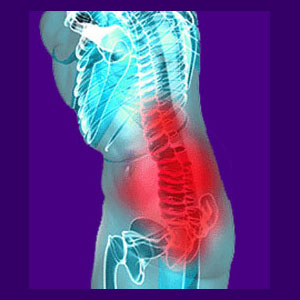
Hyperlordosis is also sometimes simply known as lordosis, although this terminology can be confusing since the latter term is universally also applied to the normal curvature of the cervical and lumbar spinal regions. The hyper version of lordosis diagnosis describes a condition in which the lumbar or cervical spine demonstrates an increased lordotic curvature, beyond the typical degree found in those respective regions.
While most cases of exaggerated lordosis are not problematic or symptomatic in any way, some extreme cases can be very troublesome and even lead to spinal instability in very rare instances.
When discussing hyperlordotic changes in the spine, it is vital to understand that there are 2 distinct varieties of the condition. The first is a condition inherent to the vertebral column itself and enacted by structural changes to the bones or discs in the spine. While this variety is not as prevalent as muscular-induced hypolordosis, it can still occur. The second type is a condition in which the back or neck muscles are actually causing the bones to be pulled out of normal alignment, increasing the curvature in the process.
This article examines lordotic changes in the spine where the degree of curvature increases due to several possible mechanisms.
What is Exaggerated Lordosis?
The lumbar spine and cervical spine both maintain lordotic curves as part of a normal anatomy. This means that the open end on the curve faces the rear of the body. These features are enacted as secondary curvatures as a baby develops.
The cervical spinal curve becomes noticeable when an infant gains the ability to hold its own head upright and further increases when the infant can sit on their own. The lumbar curvature develops when an infant is finally able to stand upright by themselves. Before these stages, there are only kyphotic curves naturally born into the spine.
An exaggerated curvature demonstrated in the lumbar or cervical lordosis simply means that the spine is more pronounced in its curvature than is usual. This condition is not nearly as common as the opposite diagnosis, hypolordosis.
Hyperlordosis Facts
Most mild to moderate cases of exaggerated lordosis are nothing to worry about. The physical signs may include a distinctive prominent head-forward posture in the neck and a protruding buttocks for lumbar lordosis. Even moderate forms of lordosis are not generally symptomatic and many people who possess overly lordotic spines are considered blessed with special beauty in some parts of the world.
Advanced and severe forms of advanced lordosis can compromise spinal form and function and can become real problems. These cases are rare, but when they exist, affected patients may suffer back pain, neck pain and a host of possible neurological concerns, including tingling, numbness or weakness.
These symptoms typically occur due to foraminal stenosis or central spinal stenosis compressing a nerve structure within the spinal canal.
Hyperlordosis Advice
Many innocent cases of lordosis which have been blamed as the source of pain have been misdiagnosed. Some cases are correct in their diagnostic conclusion, especially if the curvature is extreme. In these rare cases, conservative care, such as physical therapy, may only provide minor relief and functional improvement.
Unfortunately, in a few circumstances, back surgery may be the only solution. Worst of all, the usual procedure utilized is a hardware-assisted form of spinal fusion, which is known for being a brutal and barbaric procedure to endure. Curative statistics from this operation are poor, but it may still be needed to prevent spinal instability in the most advanced expressions. For the rest of you who have mild to moderate lordotic exaggeration, it may be wise to reconsider the condition as the source of symptoms. In most cases, any pain is coincidental to the lordotic curvature and pursuing treatment for the lordosis will yield poor curative results.
Do the research yourself and then talk to your doctor. At the very least, be sure to get a second opinion if you doubt the validity of the current diagnostic theory.




